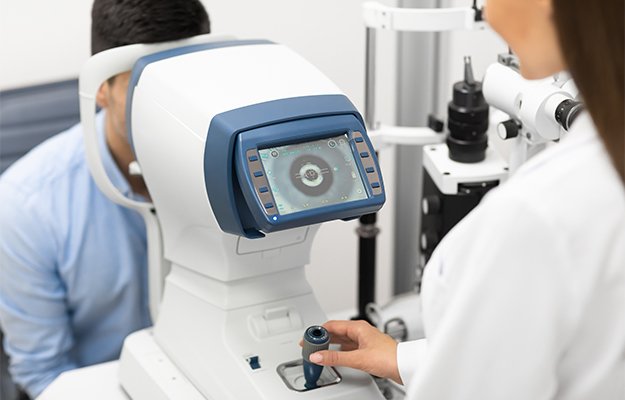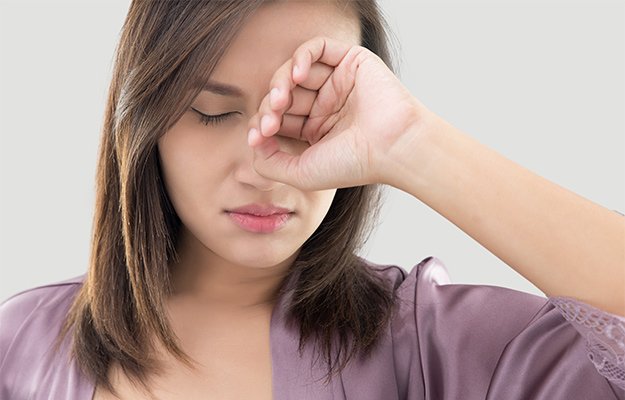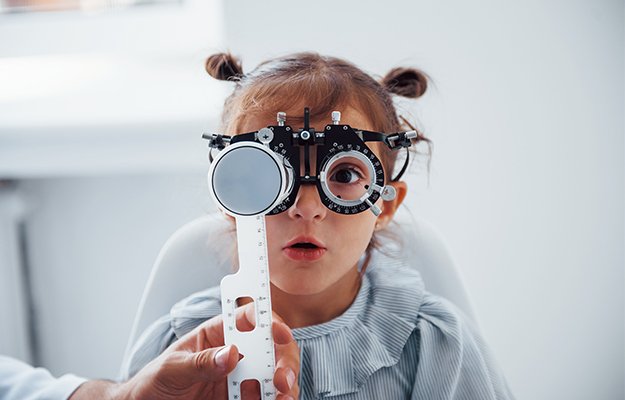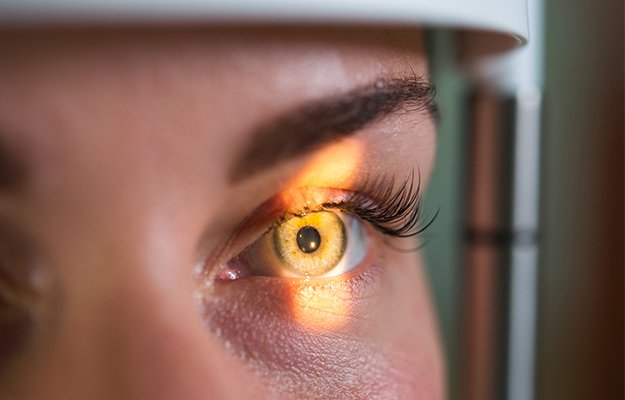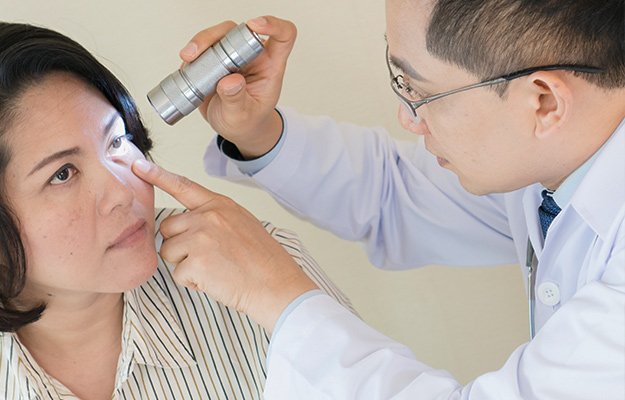Have you ever noticed your eyelid starts to quiver uncontrollably for no apparent reason? Many of us experience eye twitching during our lifetime for a variety of reasons. Learn about eye twitching and some at-home tips to stop eye twitching.
What Is Eye Twitching?
Eye twitching, also called myokymia, is a painless condition that occurs when your eyelid muscles contract involuntarily. It only affects a limited amount of fibers from the eyelid muscles and it can range from barely noticeable to bothersome.
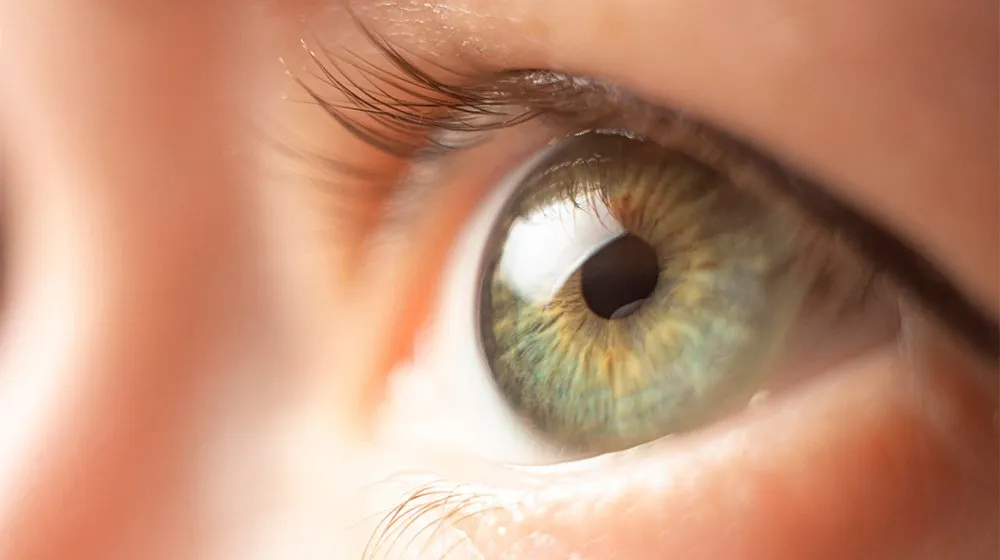
So what does eye twitching feel like? Most people describe it as a slight sensation of tug on the lower or upper eyelid, usually unilaterally (one eye only).
Eye twitching is very common and usually resolves on its own, within a few seconds to a few minutes, but may be recurrent over a few hours or days. In some cases, a twitch can last longer than expected, but it is not a reason for concern.
Although eyelid twitching is rarely a sign of a severe condition, it can turn into a nuisance when episodes of twitching happen more frequently than usual.
Besides eye twitching, there are 2 other conditions that manifest with involuntary eye lid movement:
- Benign essential blepharospasm: increased blinking of both eyes which can progress to eyelids being squeezed shut
- Hemifacial spasm: involves twitches of more muscles on one side of the face, including the eyelid
Why Is My Eyelid Twitching?
No one knows the exact cause behind eye twitching. Health experts believe that several factors play a role in spontaneous eyelid muscle contractions. Aside from general stress and fatigue, possible causes of eye twitching are:
- Environmental irritants (pollutants, dirt, bright light, wind)
- Eye strain or irritation
- Caffeine intake
- Excessive drinking and smoking
- Dry eyes
- Medication side effects
- Uveitis
- Blepharitis
- Migraine
- Light sensitivity
When to see a doctor
Usually eye twitches resolve on their own within a few hours to a few days with rest, stress relief and less caffeine intake.
If the twitches are persistent for a few weeks or are accompanied by other symptoms, you should check in with your doctor. When accompanied by other symptoms, twitching might be a sign of a brain or nervous system disorder, like Bell’s palsy, cervical dystonia, multiple sclerosis and Parkinson’s disease, to name a few.
Visit an eye doctor as soon as possible if your eyes keep twitching for a few weeks or when one of the following symptoms appear:
- Your eye is red with abnormal discharge
- Drooping eyelids
- Twitching in other parts of your face or body
- Your eyelid closes completely with each twitch
7 Tips to Stop Eye Twitching
Although eye twitching resolves on its own, there are some home remedies you can try to relieve eye twitching:
Try Blinking Hard

Close your eyes as tight as possible. This will help spread tears evenly over the eye surface, preventing your eyes from drying out and relieving twitching.
Let Your Eyes Rest

People under a lot of stress or very fatigued, are prone to eye twitching. Taking a nap or de-stress can help restore your eyes more quickly.
Use a Warm Compress
Using a warm compress or warming eyepatch and applying it to the eyes can relax the muscles surrounding them.
Limit Caffeine Intake
Caffeine is a stimulant that recharges your body. Too much caffeine, however, either in your coffee, tea, or energy drink, can cause twitches to appear.
Limit your caffeine intake gradually and keep hydrated with water. Dehydration is also linked with eye twitching.
Cut Down on Stress
High-stress levels have a negative impact on your overall health and are also the major cause of eyelid twitches. Try meditation or breathing exercises, and reorganize your work schedule to limit stress.
Moisturize Your Eyes
There is a link between dry eye syndrome and eye twitches. Hydrating eye drops or artificial tears are a good idea to refresh and moisten your eyes.
Consider Supplements
Proper muscle function depends on different vitamins and minerals. An imbalance in these nutrients can be a cause of eye twitching. Especially vitamin B12, vitamin D and magnesium levels are important.
Consult with your eye doctor first before taking any supplements.
If you are experiencing constant eye twitching accompanied by an uncomfortable feeling, schedule an exam with us today to find the best treatment for your eyes.
Every patient deserves top-quality eye care from us. European Eye Center focuses on providing Western-standard services and determining appropriate treatment plans to help patients restore their vision in a feel-like-home atmosphere.
We are happy to help if you have questions about how to stop eye twitching. Don’t hesitate to connect with us at appointment@europeaneyecenter.com.
Contact us today to schedule an eye care service!






